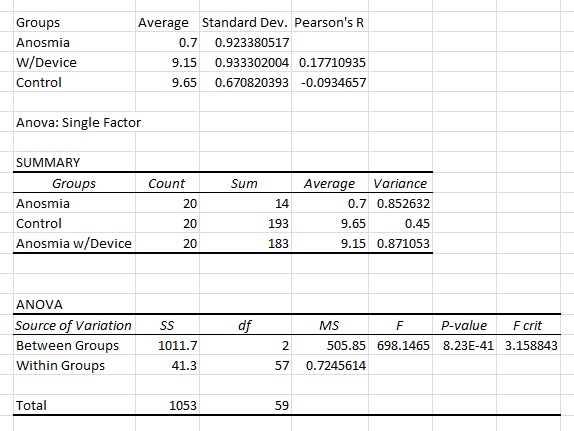BME100 s2014:T Group2 L3
| Home People Lab Write-Up 1 | Lab Write-Up 2 | Lab Write-Up 3 Lab Write-Up 4 | Lab Write-Up 5 | Lab Write-Up 6 Course Logistics For Instructors Photos Wiki Editing Help | ||||||
OUR TEAM
LAB 3A WRITE-UPDescriptive Statistics
AnalysisA paired t-test was used in our experiment. The values of each of the trials shows the fewer discrepancies. For temperature, due to it’s small 9.31E-13 value from the t-test, there is a proven close relationship between the sensor and oral component. Compared to the other 2 trials and according to the t-test, the temperature sensor did a much better job mimicking the results of the traditional thermometer. What made the t-test so important for each trial was because our group could make a head-to-head comparison of each product. We could see how close the new product was performing with the trusted old.
According to the p-values in pulse and blood pressure, the watch falls short in meeting varied outcomes. Data was taken in differing circumstances which were accurately depicted by traditional tools of measurement yet missed by the watch. Pulse's 0.1187 value was by far the largest of the data set. The sensor really fell short here measuring heart rate.
Summary/Discussion
The devices which measured blood pressure had a lot smaller variation in standard deviation, but there was over a 10mm Hg difference in the value of the means. The watch had lower overall measurements suggesting that it is prone to underestimate the blood pressure. Perhaps this is because of where it is being measured, it might be more effective if the device was adapted to be used on the bicep. The results of the pulse ox and the watch were very similar to the blood pressure devices. The watch sensor was lower overall than the pulse ox and had a higher degree of variability. It would be essential to improve the accuracy of the device, this might also be accomplished by taking measurements at the bicep as opposed to the wrist because the pulse should be stronger. LAB 3B WRITE-UPTarget Population and NeedThe target population for our device, the Smellulator, is someone from an age range of about 5+ that is suffering from Anosmia. Anosmia is a broad term for anyone that has permanent loss of smell. This could be as a result of some head trauma, a neurological condition, smoking or a wide range of other causes. Our device works similar to a cochlear implant, by restoring loss or damaged portions of the Olfactory system. The device monitors the chemicals in the air near its chemo-receptors located in two ends which are inserted into the nostrils. It transmits the information it receives from monitoring the chemicals to an external processor which is linked to an internal connection to the olfactory nerve.
Device Design
Inferential Statistics
Graph
|
||||||







